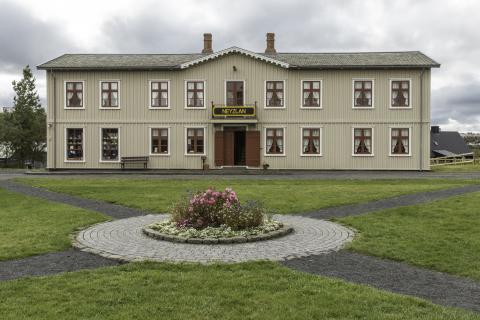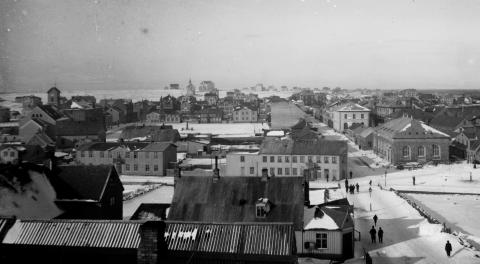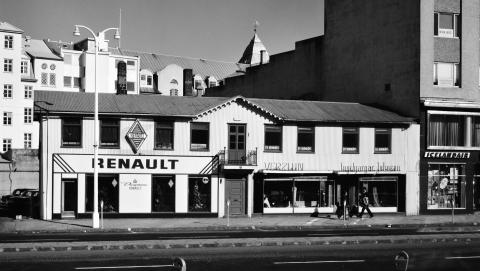
Lækjargata 4 was built next to the stream in Reykjavík town centre in 1852 by a German carpenter named Georg Ahrenz. He came to Iceland in 1847 to work on the repair and expansion of Reykjavík Cathedral. It was the first two-storey house in Reykjavík. The Bishop of Iceland, Helgi Thordarsen, bought the house in 1856 and relocated the episcopal seat there from Laugarnes. He lived there until his death in 1867. The half-timbered house was initially smaller, but around 1870, two single-storey sheds were constructed by each gable end. They were then demolished between 1884-1890, and the house extended at both ends to obtain its more modern appearance. Serving primarily as a commercial centre, Þorlákur Ó. Johnson worked there for some time: his wife Ingibjörg Johnson was the second woman in Reykjavík to run a retail business. The house was moved to the Árbær Open Air Museum in 1988. Unfortunately, part of the house collapsed during the move and had to be rebuilt on the museum grounds. Today the building houses exhibitions, function rooms, and the museum's convenience store.


Café Hermes was opened in Lækjargata 4 in 1886 and became a favourite meeting place for the town's teetotallers. The Icelandic National Day, 17 June, was first celebrated here in 1886, although it didn't become the actual National Day until 1944. The Reykjavík Union of Store and Office Workers was founded here in 1891, and the seamen's union, Báran, in 1894. The temperance lodge Einingin had been established in the house in 1885. Among other historical events that took place here was the founding of Ó. Johnson and Kaaber in 1906, the first wholesale enterprise in Iceland.
Among the well-known people who lived in the house in the 19th century was the Icelandic poet Benedikt Gröndal, who described his years there later in his memoirs, Dægradvöl. In 1884, the shed on the south end of Lækjargata 4 was torn down and a two-storey addition constructed in its place. In 1890, this process was repeated on the north side. These new additions were set at the same height as the house, which restored the building's original unified appearance. The facade was again symmetrical, with the main entrance located in the middle. During the 20th century, significant changes were made to the lower floor of the house. The windows were enlarged, and interior walls were removed. The upper floor, however, remained mostly unchanged.

